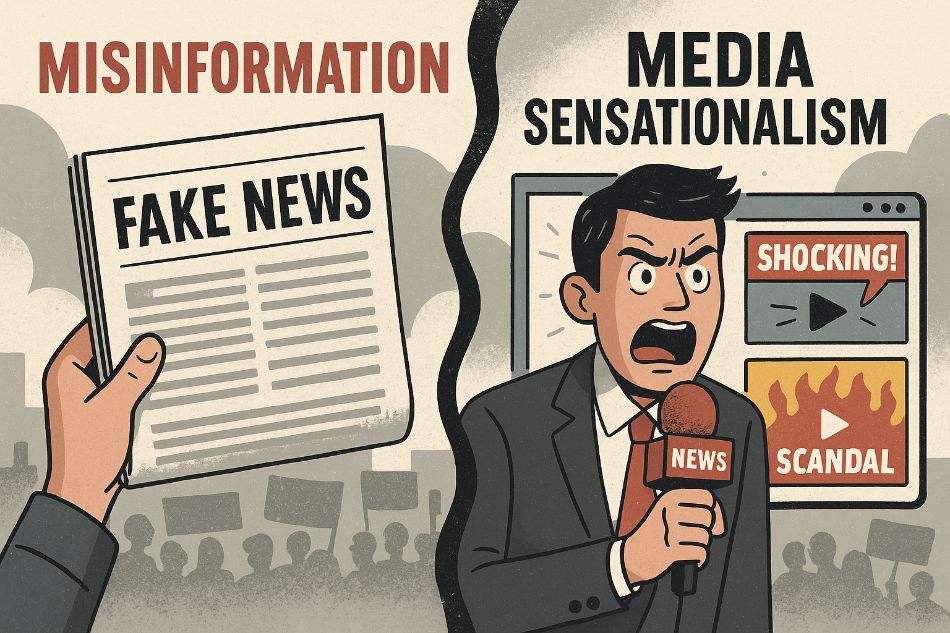The Erosion of Journalistic Integrity in Nepal: Misinformation, Disinformation, and the Pro-Monarchy Protests
Nepal, a nation with a rich history of political activism and street protests, has witnessed a disturbing trend in recent years: the decline of credible journalism and the rise of misinformation and disinformation campaigns. This phenomenon has become particularly evident during the recent pro-monarchy protests that have gripped the nation, highlighting the vulnerability of democratic discourse to manipulated narratives. The protests, organized by supporters of reinstating the monarchy and declaring Nepal a Hindu nation, have served as a fertile ground for the spread of distorted information, often fueled by vested interests and amplified by social media platforms. This decline in journalistic integrity has eroded public trust in traditional media outlets, leaving citizens struggling to discern fact from fiction in the tumultuous political landscape.
The coverage of the pro-monarchy protests, particularly since the return of ex-King Gyanendra Shah from Pokhara on March 9, 2025, and the subsequent vandalism and looting on March 28, 2025, has exposed the deep-seated biases and questionable practices plaguing Nepali media. Mainstream media, often perceived as mouthpieces of the incumbent government, have delivered highly censored and selective reports, further alienating a public already skeptical of their objectivity. Private television channels, often aligned with various political entities, have further muddied the waters by presenting news through the lens of their patrons’ interests. This partisan approach has become so blatant that even the average citizen can readily identify the political leanings of individual channels, eroding their credibility as impartial sources of information.
The advent of social media, particularly platforms like YouTube, has added another layer of complexity to the information ecosystem. While offering unprecedented access to live events and citizen journalism, these platforms have also become breeding grounds for sensationalism and the spread of unverified information. YouTubers, driven by the pursuit of views and subscribers, often prioritize sensationalized content over factual accuracy. While operating within the confines of platform guidelines to avoid demonetization or account suspension, these content creators often escape the stricter regulations imposed on traditional media, unless their content is deemed to incite hatred, disharmony, or chaos. This regulatory gap allows misinformation and disinformation to proliferate, further blurring the lines between legitimate reporting and manufactured narratives.
The coverage of the pro-monarchy protests by some Indian corporate media outlets has further exacerbated the problem. These outlets, often arriving with preconceived notions, have presented narratives seemingly detached from the ground realities in Nepal. Their coverage, often bordering on sensationalism, has projected an image of Nepal on the verge of embracing monarchy, a portrayal that starkly contrasts with the nuanced perspectives of those within the country. The fixation on figures like Durga Prasai, the self-proclaimed commander of the pro-monarchy movement, and the highlighting of alleged support from Indian political figures like Yogi Adityanath, have further fueled speculative narratives, often to the embarrassment of the monarchy supporters themselves. This external influence, coupled with the existing challenges within Nepal’s media landscape, has created a complex and often misleading information environment.
The underlying drivers of these protests are multifaceted and deeply rooted in the frustrations of the Nepali people. The current political system, characterized by a rotating cast of leaders from the Communist Party of Nepal (Unified Marxist and Leninist), Nepali Congress, and Communist Party of Nepal (Maoist), has fostered a sense of disillusionment among the populace. Rampant corruption, high inflation, stagnant economic growth, and the exodus of youth seeking employment abroad have fueled a growing discontent. This frustration creates fertile ground for alternative political forces, including the pro-monarchy movement, to gain traction, capitalizing on public dissatisfaction with the status quo. The parallels with the rise of the CPN (Maoist) insurgency in 1996, driven by similar frustrations with unresponsive political leadership, are striking.
In this era of rapid technological advancements and ubiquitous access to information, the lack of credible and unbiased media sources is a grave concern. The current media landscape in Nepal, characterized by partisan reporting, sensationalism, and the spread of misinformation and disinformation, undermines the very foundations of a healthy democracy. The fourth pillar of democracy, the media, is crumbling under the weight of its own failings. It is crucial for all stakeholders, including journalists, media organizations, government bodies, and civil society organizations, to address this issue with urgency and work towards restoring trust in the media. The future of informed democratic discourse in Nepal depends on it. A public deprived of access to accurate and unbiased information is vulnerable to manipulation and susceptible to embracing narratives that do not reflect the complex realities on the ground. The need for credible and independent journalism has never been more critical.


